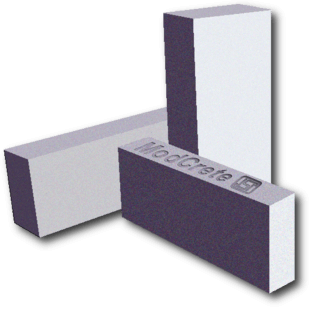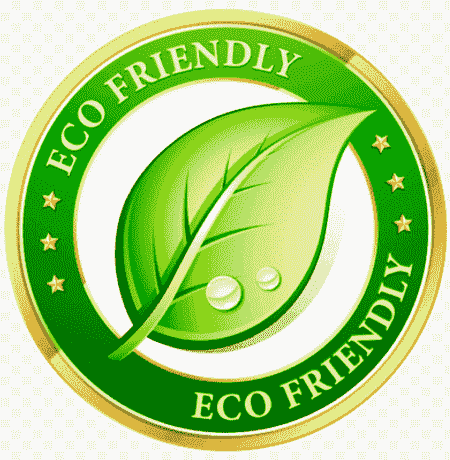Modcrete AAC Blox

High Strength
High pressure steam curing autoclaving process gives AAC unmatched strength to weight ratio, which far exceeds the Indian Building code requirements
Light Weight
AAC blocks have a density range of 451 kg/cum to 750 kg/cum. This results in total cost savings as well as a faster construction period.
Cost Effective
Being lightweight, AAC drastically reduces the dead weight of building, resulting into reduction in steel (up to 20%) and cement (up to 25%) structural cost saving. Lighter product reduces transport costs as well being 15 times the size of a clay brick, AAC wall construction involves 1/15 of joints, thus an overall mortar saving up to 66%
Sound Proof
AAC walls have an excellent sound transmission class (STC) rating of 44. Which results to virtually soundproof interiors, which in turn provides Excellent Acoustic Performance.
Superior Durability
AAC blocks are highly durable and can bear adverse weather conditions. Furthermore, they are earthquake resistant. Being ultra-light weight helps AAC be long lasting. Regions of high seismic activity like Japan exclusively use AAC. As it has proven to withstand wind loads of category 5 tropical storms.
Fire Resistant
Best in class fire rating of 4 hours. The melting point of AAC is over 1600 celcius. more than twice the typical temperature in a building fire of 650 celcius.
Accurate Dimension
Its automatic manufacturing process gives AAC an exceptional dimensional accuracy & smooth surface, eliminating need of three-coat plaster walls and allowing for a final 6mm skim coat (putty/pop). Our AAC provides greater Design Versatility & Flexibility.
Thermal Insulation
It has highest thermal rating in the industry: R30! Thus, it provides well insulated interiors, keeping out warm air in summer and cold air in winters. AAC reduces Air conditioning cost upto 30%.
Workability
AAC blocks can be sawed, drilled, just like wood and hence they prove to be one of the most easy to use construction materials’. It facilitates easier fitting of plumbing, electrical and also wall
fittings.
Eco Friendly
AAC is 100% Green Building Material & is a walling material of choice in LEED certified buildings. AAC is most energy & resource efficient in the sense that it uses least amount of energy & material per m3 of product. Unlike brick manufacturing process which uses previous top-layer agricultural soil, AAC uses FlyAsh (65% of its weight).
Termite & Insect Resistant
Solid wall construction and finishes which bond to the wall have no cavities for insects, termites or rodents to dwell in. This also eliminates entry points. Termites and ants do not eat or nest in AAC. Cannot be penetrated by termites or insects. Reduces need for pest control. Offers maximum protection against damage.
Faster Construction
AAC Blocks helps reduce the construction time by upto 20%. Different sizes of blocks help reduce the number of joints in wall masonry. Easy to install. It sets and hardens very quickly. Lighter blocks make construction easier and faster
ModCrete AAC Blox
Autoclaved Aerated Concrete, also known as AAC, is a light weight, pre cast building material that is used around the world. AAC was perfected in the mid- 1920s by the Swedish architect and inventor Dr. Johan Axel Eriksson, working with professor Henrik Kreüger at the Royal Institute Of Technology. It went into production in Sweden in 1929 in a factory in Hällabrottet and quickly became very popular.
Proven as the most ideal substance for structural walls, fire walls, sound walls, floor and roof systems. It is available in blocks and panels in desired shapes and sizes. The AAC is produced with fly ash, gypsum, cement, lime, aluminium and soluble oils with automatic material handling equipment under high temperature and baked with high pressure steam in controlled environment.
AAC mostly consists of Air (around 80%). This is achieved by using fly ash, lime and cement as the major raw material. Scientists figured out, lime and cement chemically reacts with aluminium to create millions of tiny air cells which gives AAC its unique properties.
This process is environment friendly with zero discharge in process. The blocks are baked in high pressure steam and temperature with controlled emission from State of Art Thermax Boilers.
How are they made?
Common ingredients used in the production of AAC blocks include lime, cement, sand, water, gypsum, fly ash and Calcium oxide (commonly known as quicklime). Aluminium powder reacts chemically with these and hydrogen gas escapes into the air towards the end of the procedure. It is this chemical reaction that lends AAC blocks their distinct honey-comb structure, lightness and other insulation properties.
Having undergone necessary moulding and mixing, these are further cured in an autoclave (subject to high heat and pressure) that imparts them the desired strength and durability.

Sizes
The size of AAC blocks are as under :-
| Length | 600 mm (23.6 in) & 625 mm (24.6in) |
| Height | 200 mm (8 in), 240 mm (9.5 in) & 250 mm (10 in) |
| Width | 100, 115, 125, 150, 200, 225, 250, 300mm (4, 41⁄2, 5, 6, 8, 9 10, 12 in) |
Get Requirement Estimate
Technical
Specifications
| Parameter | Specification |
| Density Oven Dry | 550-650 kg/m3 |
| Compressive strength | 4N/mm2 (MPa) |
| Shear Strength | 0.6 N/m2 |
| Modulus of Elasticity | 2040 Mpa |
| Coefficient of Thermal Expansion | 8.1 x 10^(-6)*K^(-1) |
| Water Absorption | 8% |
| Thermal Conductivity | 0.16 w/m^(0)K |
| Thermal resistance | 0.46 m2 - 0k/w |
| Drying Shrinkage | 0.04% |
| Fire resistance | 4 Hrs (for 200 mm wall) |
| Sound Transmission class rating | 44db for 200 mm wall |
We've Been here for over 20 years
We have an experience of more than 20 years in the fly ash industry, and are dedicated to be the driving force of change in the construction material market to make it more inclusive for the nature.
